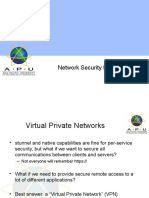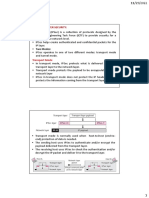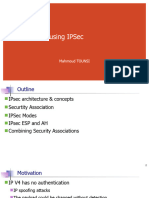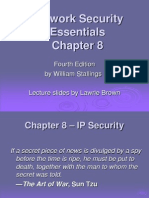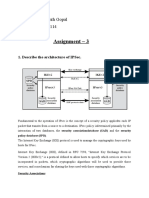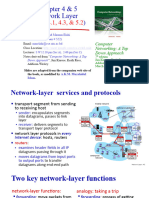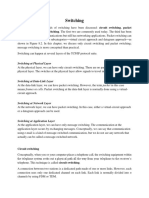0% found this document useful (0 votes)
30 views33 pagesUnit V - Network Layer Security Protocols
The document discusses Network Layer protocols, focusing on Internet Protocol Security (IPsec), which provides authentication and encryption for IP-based networks. It outlines the services offered by IPsec, such as access control, integrity, confidentiality, and authentication, as well as the two main protocols: Authentication Header (AH) and Encapsulation Security Payload (ESP). Additionally, it covers Virtual Private Networks (VPNs), their components, types, and tunneling technologies, emphasizing the importance of security in both the network and physical layers.
Uploaded by
balasadhana983Copyright
© © All Rights Reserved
We take content rights seriously. If you suspect this is your content, claim it here.
Available Formats
Download as PPTX, PDF, TXT or read online on Scribd
0% found this document useful (0 votes)
30 views33 pagesUnit V - Network Layer Security Protocols
The document discusses Network Layer protocols, focusing on Internet Protocol Security (IPsec), which provides authentication and encryption for IP-based networks. It outlines the services offered by IPsec, such as access control, integrity, confidentiality, and authentication, as well as the two main protocols: Authentication Header (AH) and Encapsulation Security Payload (ESP). Additionally, it covers Virtual Private Networks (VPNs), their components, types, and tunneling technologies, emphasizing the importance of security in both the network and physical layers.
Uploaded by
balasadhana983Copyright
© © All Rights Reserved
We take content rights seriously. If you suspect this is your content, claim it here.
Available Formats
Download as PPTX, PDF, TXT or read online on Scribd
/ 33














